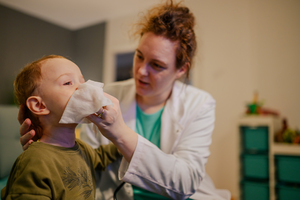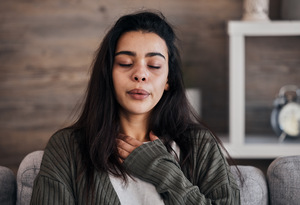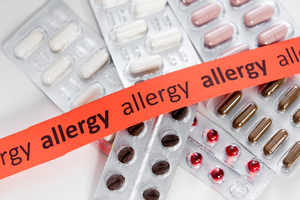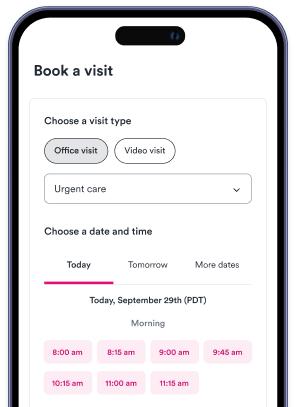Key points
- Pool safety is essential as drowning is a leading cause of accidental death in children, with many incidents occurring in residential and community pools.
- Key safety measures include adult supervision, teaching children swimming and water safety skills, installing safety barriers and alarms, and keeping safety equipment nearby.
- Recognizing the signs of drowning, understanding secondary drowning symptoms, and practicing safe water habits can help prevent drowning incidents.
- Other pool safety concerns include preventing slips and falls, understanding chemical safety, taking sun safety seriously, and preventing waterborne illnesses.
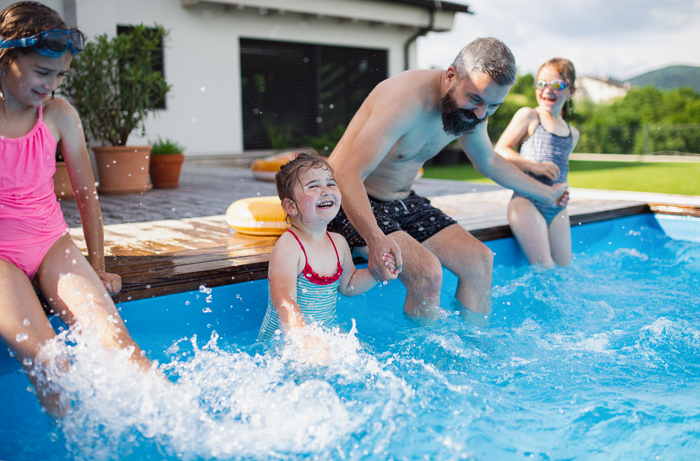
Keeping your family safe around water is a top priority, especially when young children are involved. Pools can be a source of endless fun, but they also present significant risks if proper precautions aren't taken. Drowning is one of the leading causes of accidental death for children, making pool safety an essential focus for families. This guide will provide practical tips and expert advice to help you create a safe swimming environment, whether at home or in a community pool. With a proactive approach and a few simple strategies, you can ensure that your family enjoys the water safely and responsibly.
Why pool safety matters for families
Drowning remains one of the leading causes of accidental death in young children, with the Centers for Disease Control and Prevention (CDC) reporting that drowning is the second leading cause of unintentional injury death among children ages 1 to 14. Tragically, many of these incidents occur in residential swimming pools or community aquatic facilities.
While pools can offer hours of enjoyment and physical activity, they also pose significant safety risks if not properly managed. Both home pools and public swimming areas can present dangers, especially when adequate safety measures are not in place. Accidents can happen in a matter of seconds, emphasizing the need for constant vigilance and proactive safety planning.
4 ways to keep your kids safe around pools
Keeping children safe around pools requires a combination of supervision, education, and safety equipment. Implementing these essential safety practices can significantly reduce the risk of accidents and ensure a safe environment for everyone.
1. Always have adult supervision
One of the most effective ways to prevent drowning is through constant adult supervision. Designate a responsible adult as a "water watcher" whenever children are swimming, ensuring they stay focused on monitoring the pool without distractions (including being on their phone).
2. Teach children swimming and water safety skills
Enrolling children in swim lessons from a young age is an excellent way to build their confidence and competence in the water. Teaching them essential swimming skills, such as floating and treading water, can make a significant difference in an emergency. Additionally, educate children on pool rules, like no running near the pool deck and no diving in shallow areas, to minimize the risk of injuries.
3. Install safety barriers and alarms
Physical barriers are a critical component of pool safety. Install pool fences that meet local safety standards, featuring self-closing and self-latching gates. To add another layer of protection, consider installing door alarms that alert you when someone enters the pool area and using pool covers when the pool is not in use.
4. Keep safety equipment nearby
Being prepared for emergencies is vital. Keep essential safety gear, like life jackets, rescue rings, and a first aid kit, within easy reach of the pool area. Additionally, all adults supervising the pool should know CPR and basic water rescue techniques. Quick, informed action can make a critical difference if an accident occurs.
3 drowning prevention strategies for parents
Preventing drowning requires more than just keeping an eye on children while they swim. It involves understanding the subtle signs of drowning, recognizing delayed symptoms, and instilling safe water habits:
1. Know the signs of drowning
Contrary to common portrayals, drowning is often silent and quick, without the dramatic splashing and shouting depicted in movies. In reality, a child in distress may show subtle signs that can easily go unnoticed. Look for head bobbing, difficulty keeping their mouth above water, or struggling to stay afloat. Children may appear to be climbing an invisible ladder or gasping for air, their movements weak and uncoordinated.
One of the most alarming aspects of drowning is how fast it can happen, often in less than a minute. Being able to identify these less obvious indicators is crucial, as immediate intervention can save a life. Always maintain constant visual contact with children when they are in or near water, and never assume that silence means safety.
2. Recognize secondary drowning symptoms
Even after a child seems fine following a minor water incident, it's essential to be aware of secondary drowning. This condition occurs when water that was inhaled during a near-drowning incident causes inflammation or fluid buildup in the lungs, potentially leading to respiratory distress hours later.
Symptoms of secondary drowning include persistent coughing, chest pain, difficulty breathing, and unusual fatigue. If your child displays any of these signs after being in the water, seek medical attention immediately. Early detection and prompt medical intervention can prevent severe complications or even death.
3. Practice safe water habits
Establishing safe habits around the pool is key to preventing drowning incidents:
- One of the most important practices is to avoid distractions when supervising children. Resist the urge to check your phone, read a book, or engage in conversations that pull your focus away from the water.
- Drowning can occur in mere seconds, making uninterrupted attention essential.
- Encouraging the buddy system is another valuable safety measure.
- Teach children to always swim with a friend or family member, ensuring that someone is nearby in case of an emergency.
- Set clear rules for pool use, like no swimming alone and no rough play near the water’s edge.
How to respond in a pool emergency
Despite taking all necessary precautions, pool emergencies can still occur. Knowing how to respond quickly and effectively can mean the difference between life and death. Being prepared with the right rescue techniques and first aid knowledge is crucial, whether it's a near-drowning situation or another pool-related injury.
Understand rescue techniques
When someone is struggling in the water, your first instinct might be to jump in and help, but it’s crucial to assess the situation carefully. If possible, use a reaching pole, a flotation device, or any long object to pull the person to safety rather than entering the water yourself. This approach minimizes the risk of the rescuer being pulled under by a panicked swimmer.
Only enter the water if there is no other option and you are confident in your swimming abilities and rescue skills. Once the person is safely out of the water, assess their condition and be prepared to administer first aid.
Perform CPR immediately if necessary
If the individual is unresponsive or not breathing after being pulled from the water, start CPR immediately. Begin by checking for signs of breathing — place your ear close to the person’s mouth and look for chest movements. If the person is not breathing or only gasping, call 911 or instruct someone else to do so while you start CPR.
CPR training is highly recommended for anyone supervising children near water. Taking a certified CPR course equips you with the skills needed to perform lifesaving techniques confidently. Even if you haven’t received formal training, attempting CPR is better than doing nothing at all.
What to do after a near-drowning incident
Once the person has regained consciousness or shows signs of recovery, it’s important to continue monitoring them closely. To ensure safety, seek medical evaluation even if the individual seems fully recovered. Prompt medical attention can prevent further complications and ensure the best possible outcome.
Preventing pool accidents beyond drowning
While drowning is the most critical pool safety concern, it’s not the only risk families should be aware of. Pools can also be a source of other types of accidents and health issues, from slips and falls to chemical exposure and waterborne illnesses. Several preventive measures can help keep everyone safe and healthy while enjoying pool time:
Prevent slips and falls
Slippery surfaces around the pool area significantly increase the risk of falls, which can result in injuries ranging from minor scrapes to serious head trauma. Pool decks are often wet and can become especially hazardous if not properly maintained. To reduce the risk of slipping:
- Keep pool decks as dry as possible by wiping up puddles immediately. Installing non-slip mats or textured flooring can also provide extra traction.
- Establish clear rules about running near the pool.
- Educate children and guests about the dangers of slippery surfaces and reinforce the importance of walking cautiously.
- Regularly inspect the area for any damage or algae growth that could increase slipperiness and address these issues promptly.
Learn about chemical safety
Chemicals are necessary to maintain clean and safe pool water, but if mishandled, these substances can pose health hazards:
- Always store pool chemicals in a secure, dry location that is out of reach of children and pets.
- Ensure that containers are tightly sealed and clearly labeled, and avoid mixing different chemicals, as some combinations can produce toxic gases.
- When adding chemicals to the pool, follow manufacturer's instructions carefully and use proper protective gear, like gloves and goggles.
- Never allow children to handle pool maintenance tasks, and educate them on the dangers associated with pool chemicals.
Keeping these substances properly stored and using them correctly can significantly reduce the risk of accidental poisoning or chemical burns.
Take sun safety seriously
Spending time by the pool often means prolonged exposure to the sun, which can increase the risk of sunburn and long-term skin damage. Protecting children and adults alike from harmful UV rays should be a priority during pool outings:
- Apply a broad-spectrum sunscreen with an SPF of at least 30, and reapply it every two hours or after swimming.
- Don’t forget areas that are often overlooked, like the ears, back of the neck, and tops of feet.
- To further reduce sun exposure, encourage children to wear UV-protective swim shirts and wide-brimmed hats when not in the water.
- Setting up shaded areas using umbrellas or canopies provides a safe place to cool down and reduce direct sun exposure during peak UV hours, typically between 10 a.m. and 4 p.m.
Prevent waterborne illnesses
Pools can harbor bacteria and viruses that cause illnesses, including gastrointestinal infections and skin rashes. To minimize the spread of waterborne pathogens:
- Encourage everyone to shower before entering the pool. This simple practice helps reduce the introduction of sweat, dirt, and contaminants into the water.
- Teach children to avoid swallowing pool water, as ingesting even small amounts can expose them to harmful microbes.
- Conduct regular pool maintenance, including checking chlorine and pH levels, to keep the water sanitized.
- If someone in the family has diarrhea or an open wound, they should not enter the pool, as these conditions can increase the risk of spreading infections.
Addressing safety concerns beyond drowning can help families enjoy a more secure and healthy pool environment. Implementing these precautions protects against accidents and promotes a hygienic and comfortable swimming experience for everyone.
FAQs about pool safety for families
Keeping your family safe around the pool involves more than just supervision:
How do I childproof my home pool?
Childproofing your home pool is essential to preventing accidental drownings and injuries:
- Start by installing a safety fence that completely surrounds the pool and has a self-closing, self-latching gate. The fence should be at least four feet high and meet local safety regulations.
- Additionally, consider using a pool cover that can support the weight of a child to prevent accidental falls.
- Installing door alarms and pool motion sensors can alert you if someone enters the pool area unsupervised.
- Keep all pool toys and floats out of sight when not in use to reduce temptation.
- Educate your children about the importance of never entering the pool area without an adult's permission.
- Regularly inspect safety barriers for damage or wear and repair them promptly to maintain their effectiveness.
At what age should kids start swimming lessons?
Experts recommend starting swimming lessons as early as age one, although the optimal age may vary depending on the child’s comfort level and readiness. Early exposure helps children develop water confidence and basic swimming skills, which can be lifesaving.
The American Academy of Pediatrics (AAP) suggests that formal lessons can begin by age four, when most children are developmentally ready to learn fundamental swimming techniques. However, water safety skills can be introduced earlier through parent-and-child classes that focus on water acclimation and floating. Regardless of age, lessons should be taught by certified instructors who follow safety protocols.
What are the most common pool safety hazards?
Drowning is the most severe pool hazard, but other risks include slips and falls, chemical exposure, and waterborne illnesses. Slippery pool decks can cause injuries, so always keep surfaces dry and use non-slip mats. Chemicals used for pool maintenance can be hazardous if stored improperly or mishandled, leading to burns or respiratory issues.
Waterborne illnesses can also be a concern, especially in public pools where many people use the same water. Inadequate chlorine levels and poor hygiene practices can increase the risk of infections. Additionally, faulty pool drains without compliant covers can cause entrapment, a potentially life-threatening situation, particularly for young children.
Are public pools safer than private pools?
Public pools are typically monitored by trained lifeguards, which can add an extra layer of safety. Additionally, they are subject to health and safety inspections to ensure that water quality and safety protocols are maintained. However, the high volume of swimmers can also increase the risk of waterborne illnesses if hygiene standards are not strictly enforced.
Private pools, on the other hand, may lack professional oversight, making them potentially more dangerous if safety measures are not consistently applied. However, private pools offer more control over who enters the water and how it is maintained. Regardless of the setting, active supervision, proper maintenance, and adherence to safety practices are essential to minimize risks.
By being proactive about childproofing, choosing the right time for swim lessons, and understanding common hazards, families can make informed decisions that enhance safety both at home and in public swimming areas.
Find Urgent Care Near You for Pool-Related Injuries
Accidents can happen even when every safety precaution is in place. Whether it's a minor slip, a cut from rough pool surfaces, or symptoms of secondary drowning after a near-drowning incident, prompt medical attention can make a significant difference.
Solv makes it easy to find urgent care near you for non-emergency pool injuries. With convenient same-day booking options, you can quickly secure an appointment and get the care you need without long wait times. Use Solv to locate nearby urgent care centers, check availability, and reserve your spot in just a few clicks.
FAQs
Why is pool safety important for families, especially those with young children?
Pool safety is crucial because drowning is one of the leading causes of accidental death in children. Both home pools and public swimming areas can present dangers, especially when adequate safety measures are not in place. Accidents can happen in a matter of seconds, emphasizing the need for constant vigilance and proactive safety planning.
What are some strategies to keep children safe around pools?
Some strategies include constant adult supervision, teaching children swimming and water safety skills, installing safety barriers and alarms around the pool, and keeping safety equipment nearby. Additionally, all adults supervising the pool should know CPR and basic water rescue techniques.
How can parents prevent drowning incidents?
Parents can prevent drowning by understanding the subtle signs of drowning, recognizing delayed symptoms, and instilling safe water habits. This includes maintaining constant visual contact with children when they are in or near water, being aware of secondary drowning symptoms, and establishing safe habits around the pool such as avoiding distractions when supervising children and encouraging the buddy system.
What should be done in case of a pool emergency?
In case of a pool emergency, it's crucial to respond quickly and effectively. This includes understanding rescue techniques, performing CPR immediately if necessary, and seeking medical evaluation even if the individual seems fully recovered. Being prepared with the right rescue techniques and first aid knowledge can mean the difference between life and death.
What other safety measures should be taken to prevent pool accidents beyond drowning?
Besides drowning, pools can also be a source of other types of accidents and health issues, from slips and falls to chemical exposure and waterborne illnesses. Preventive measures include keeping pool decks as dry as possible, storing pool chemicals in a secure, dry location, applying a broad-spectrum sunscreen with an SPF of at least 30, and encouraging everyone to shower before entering the pool.




